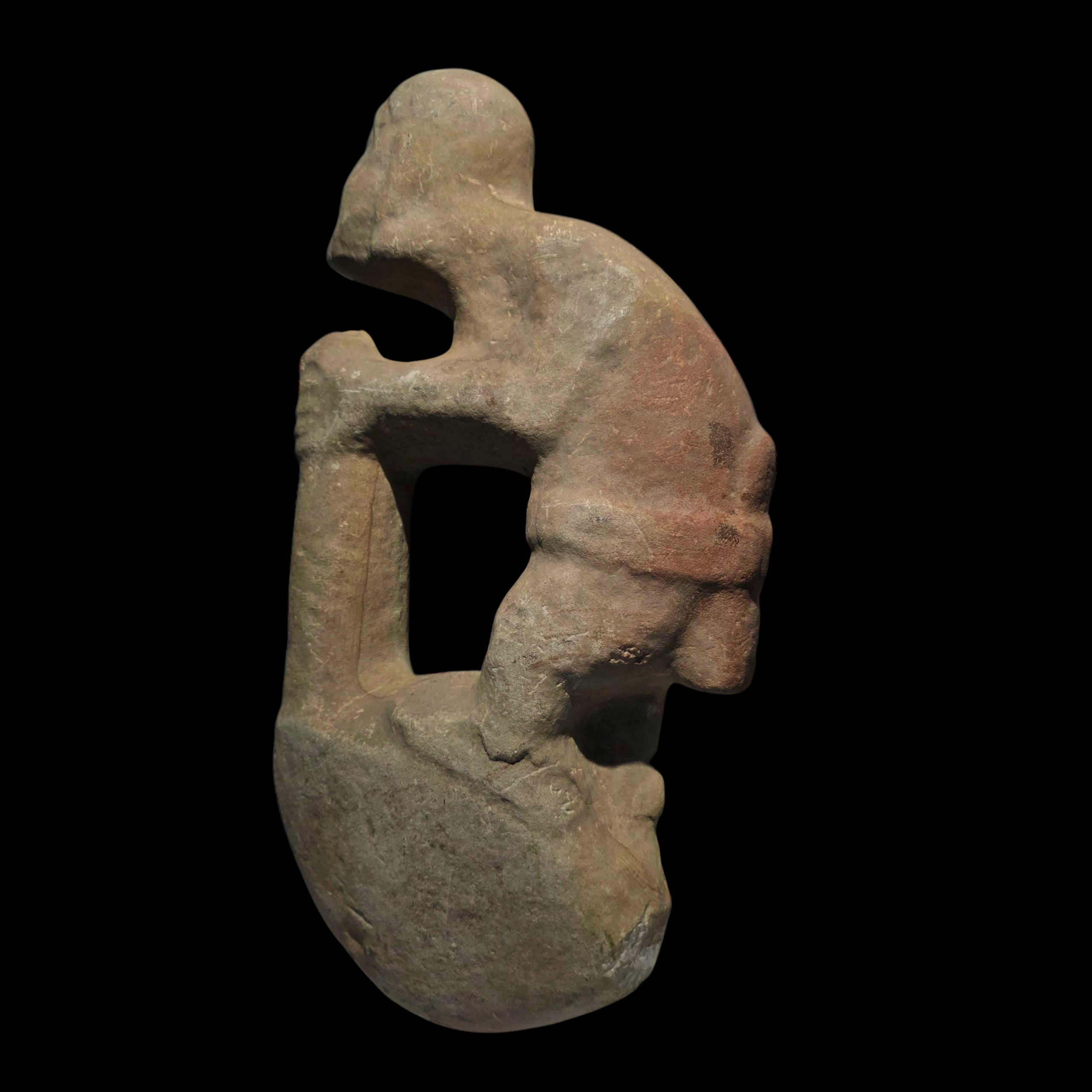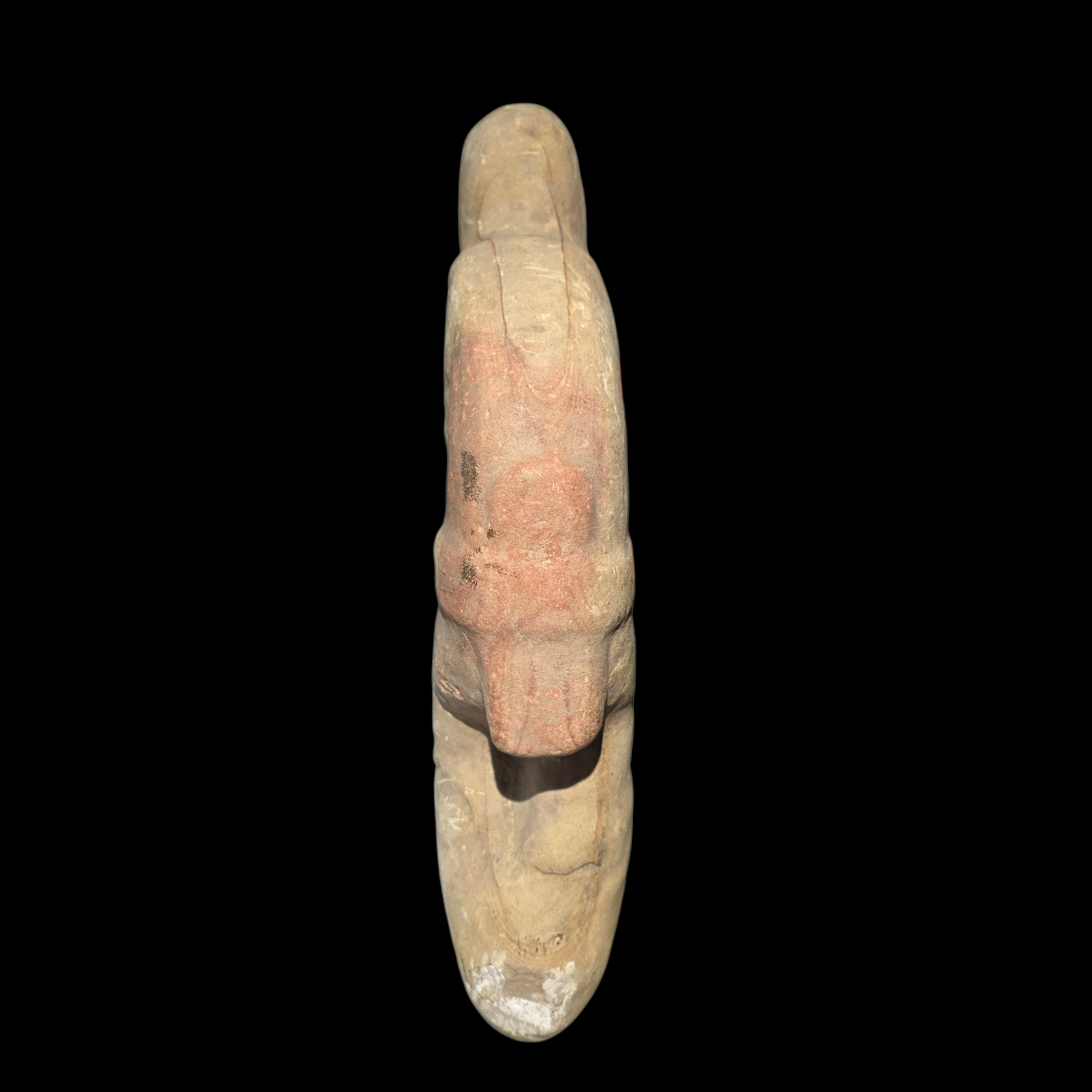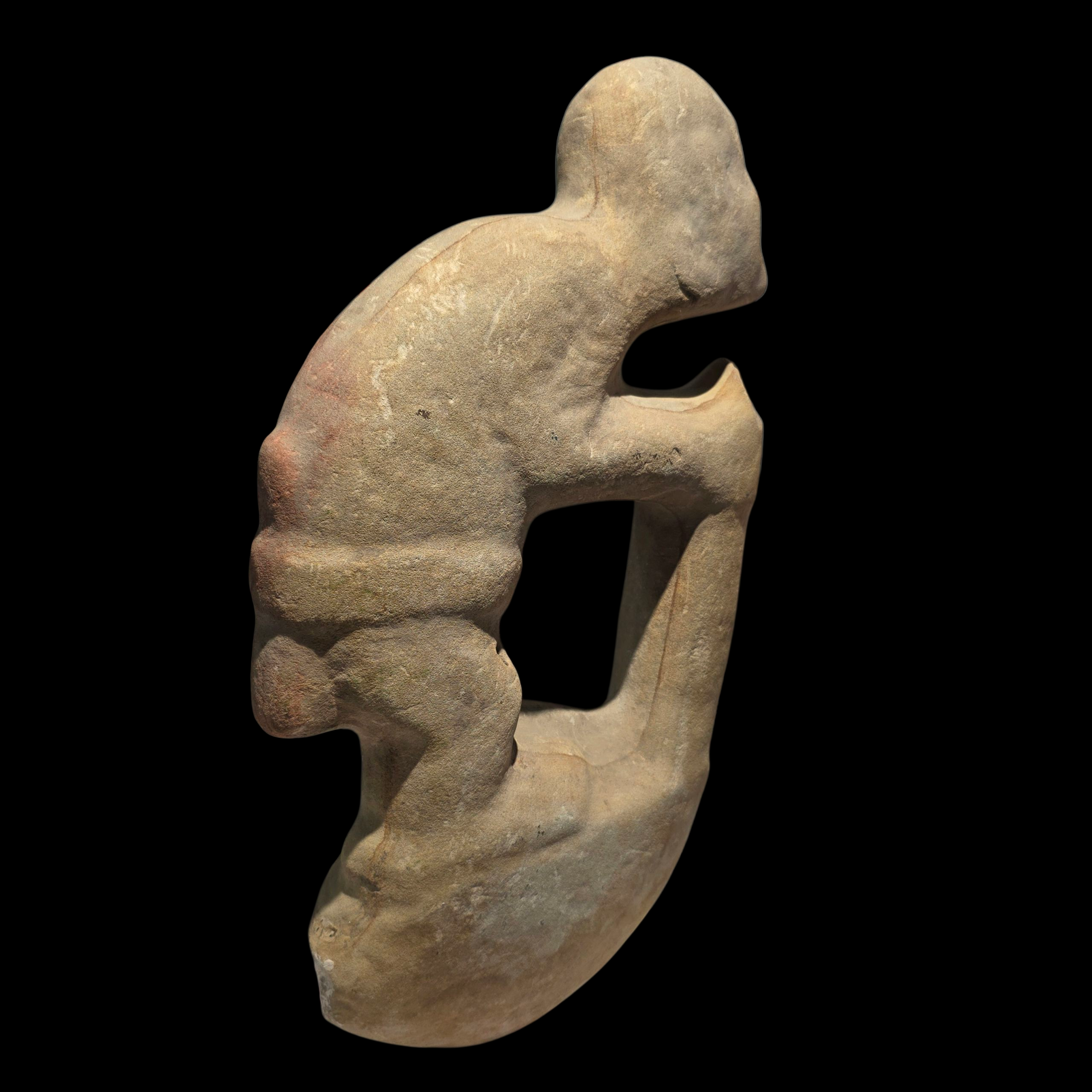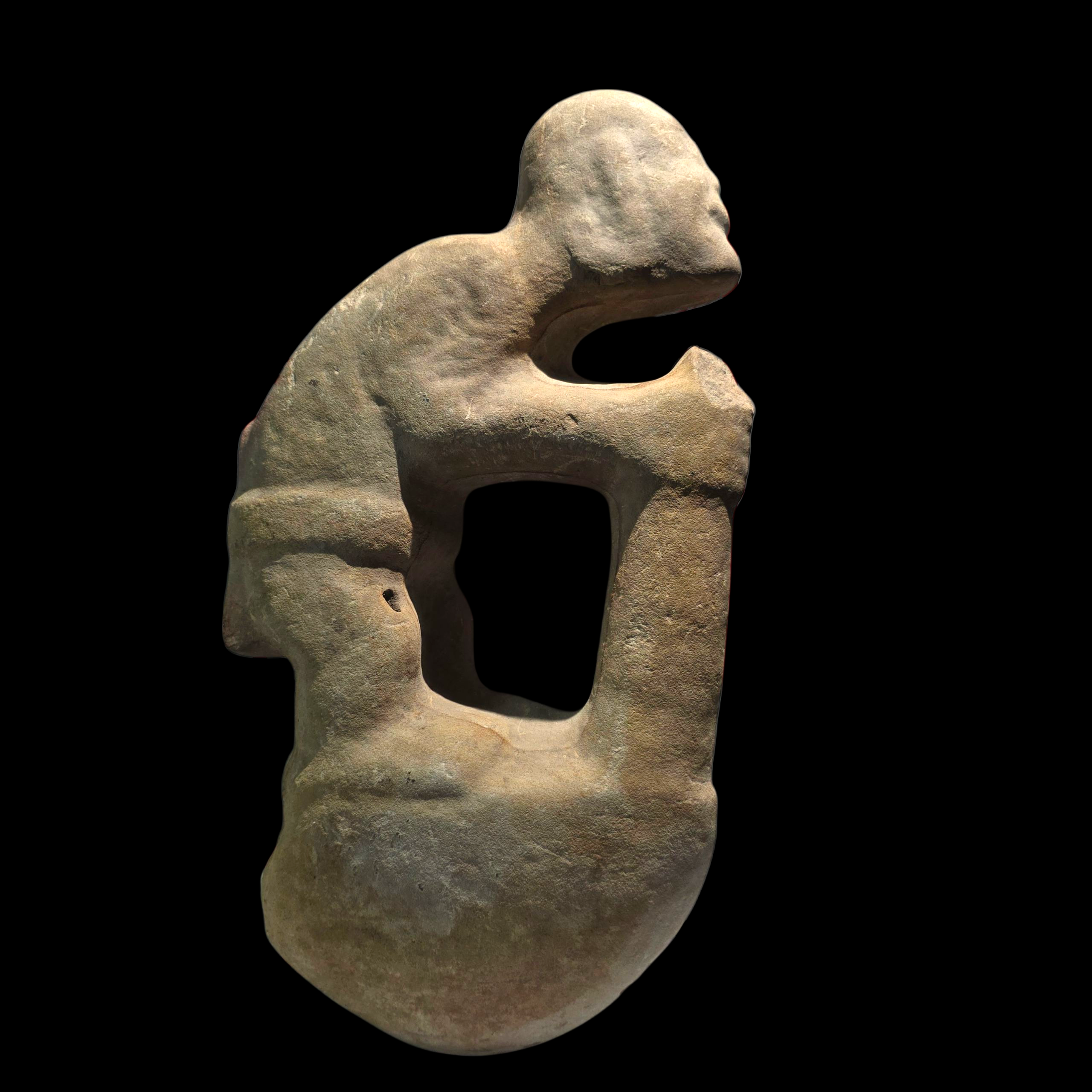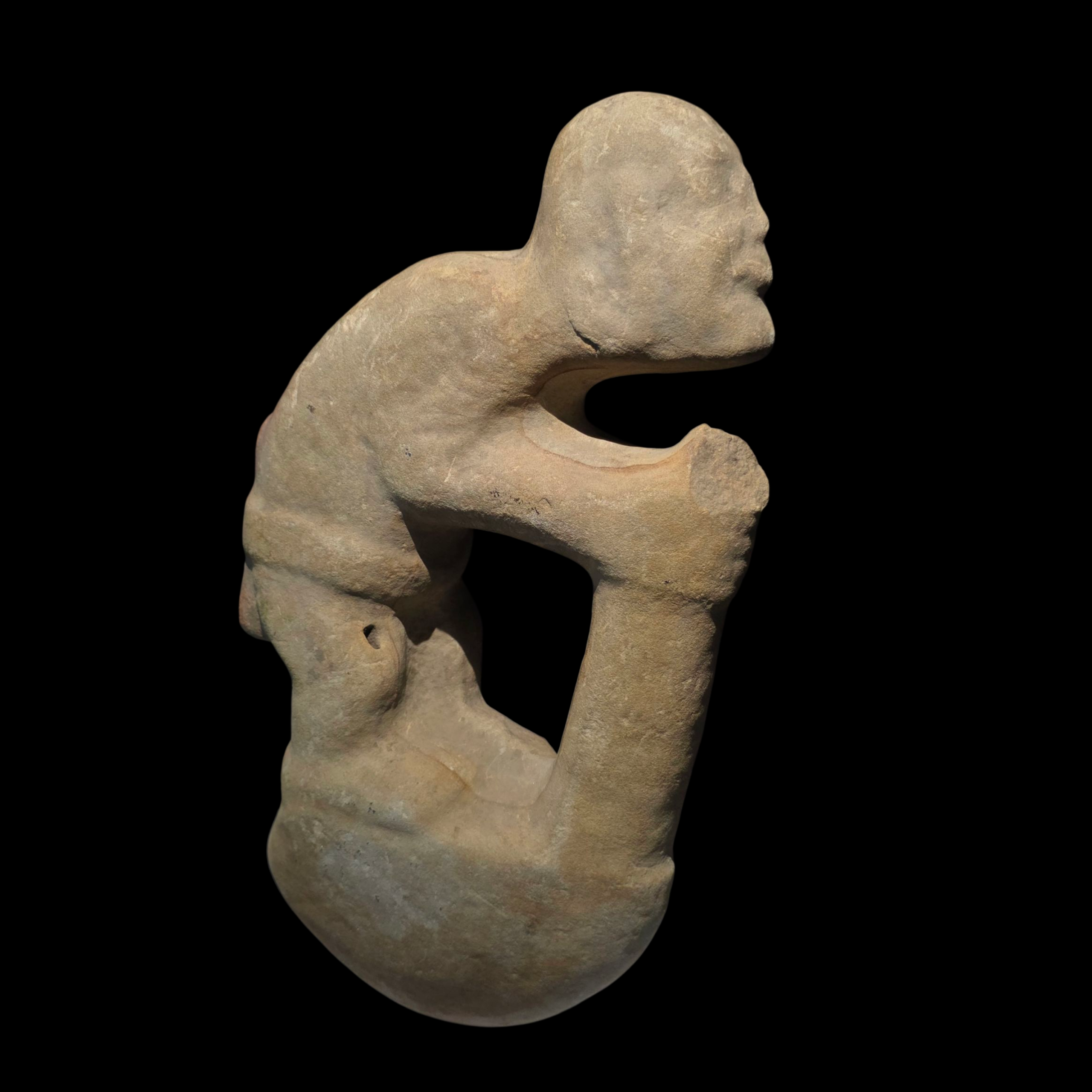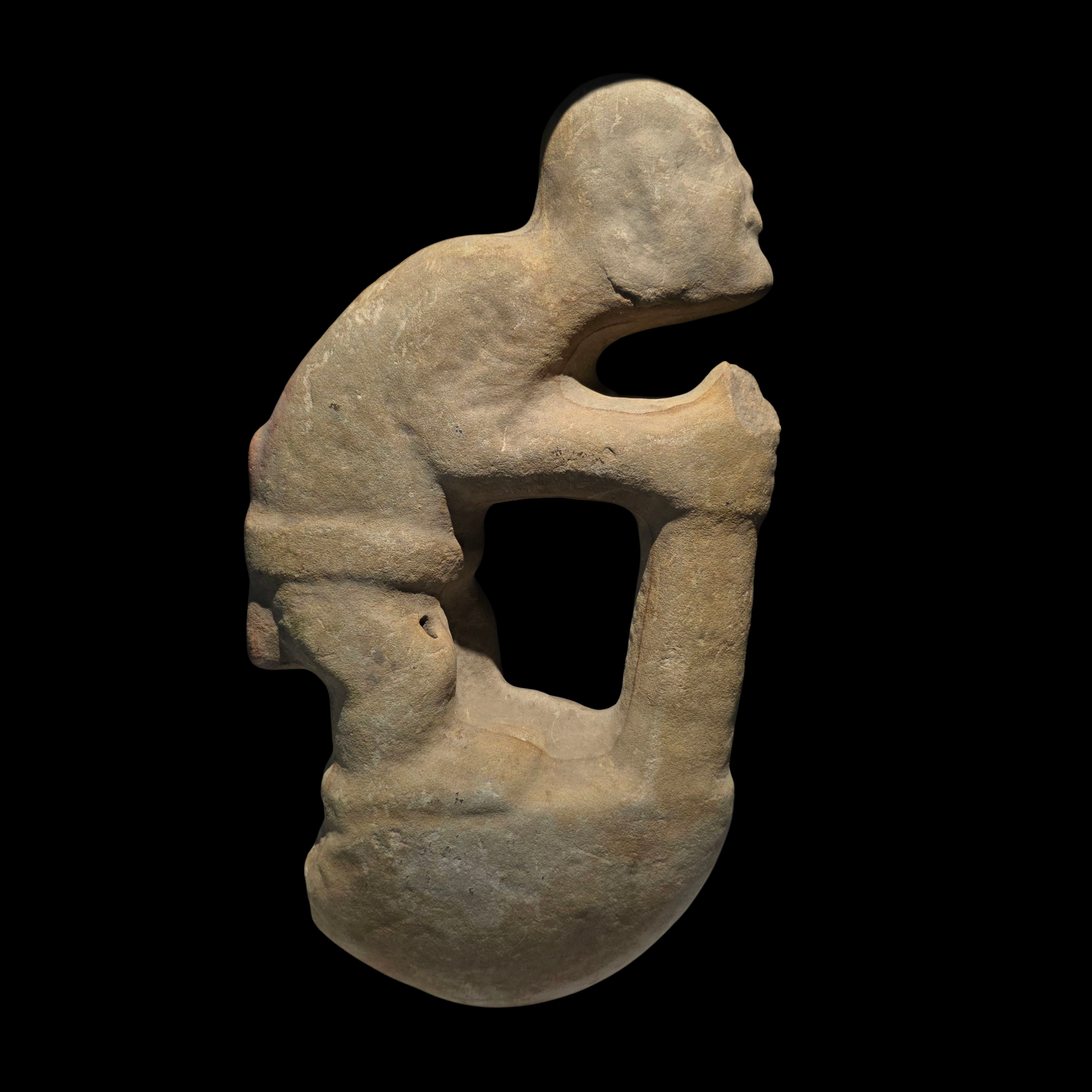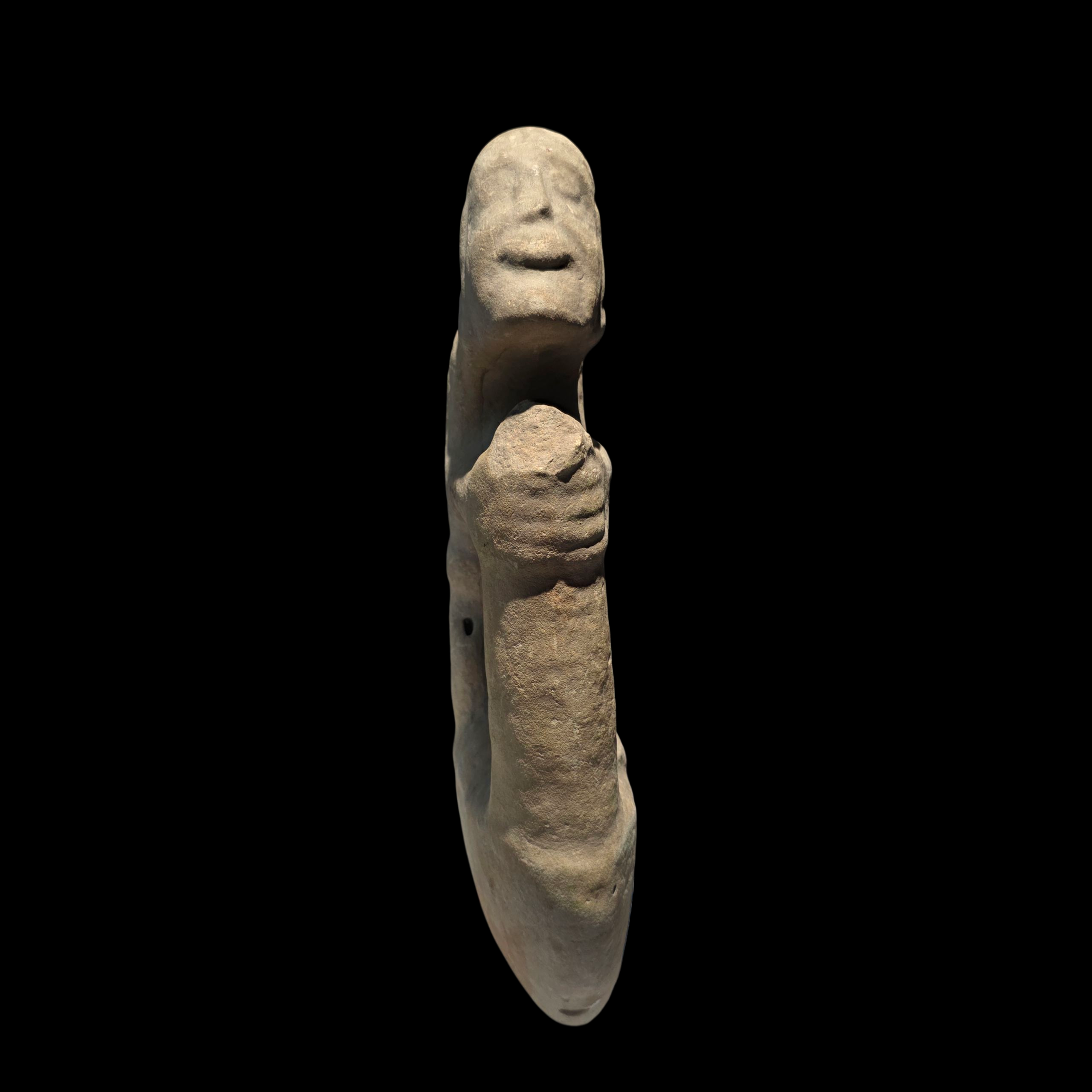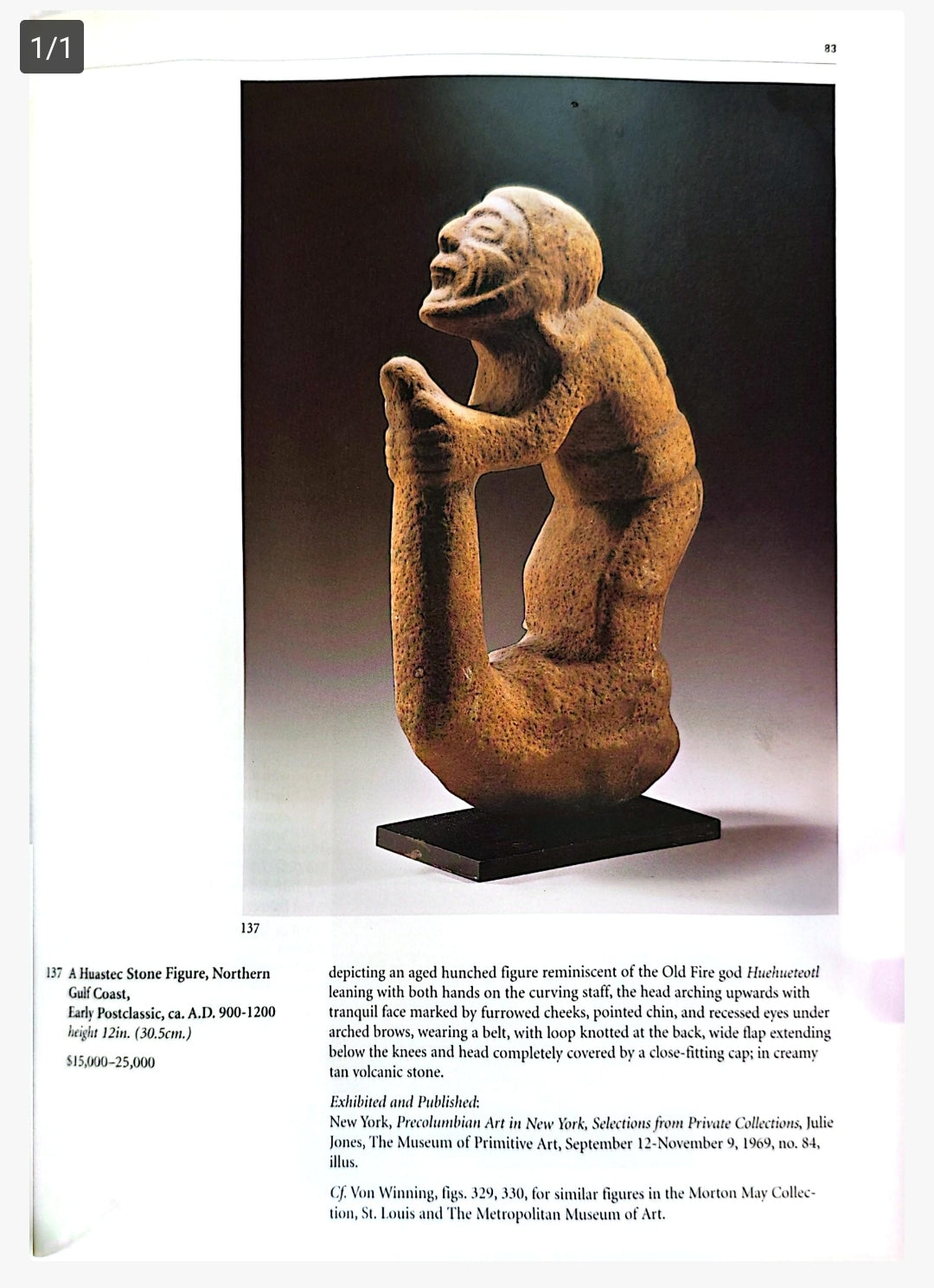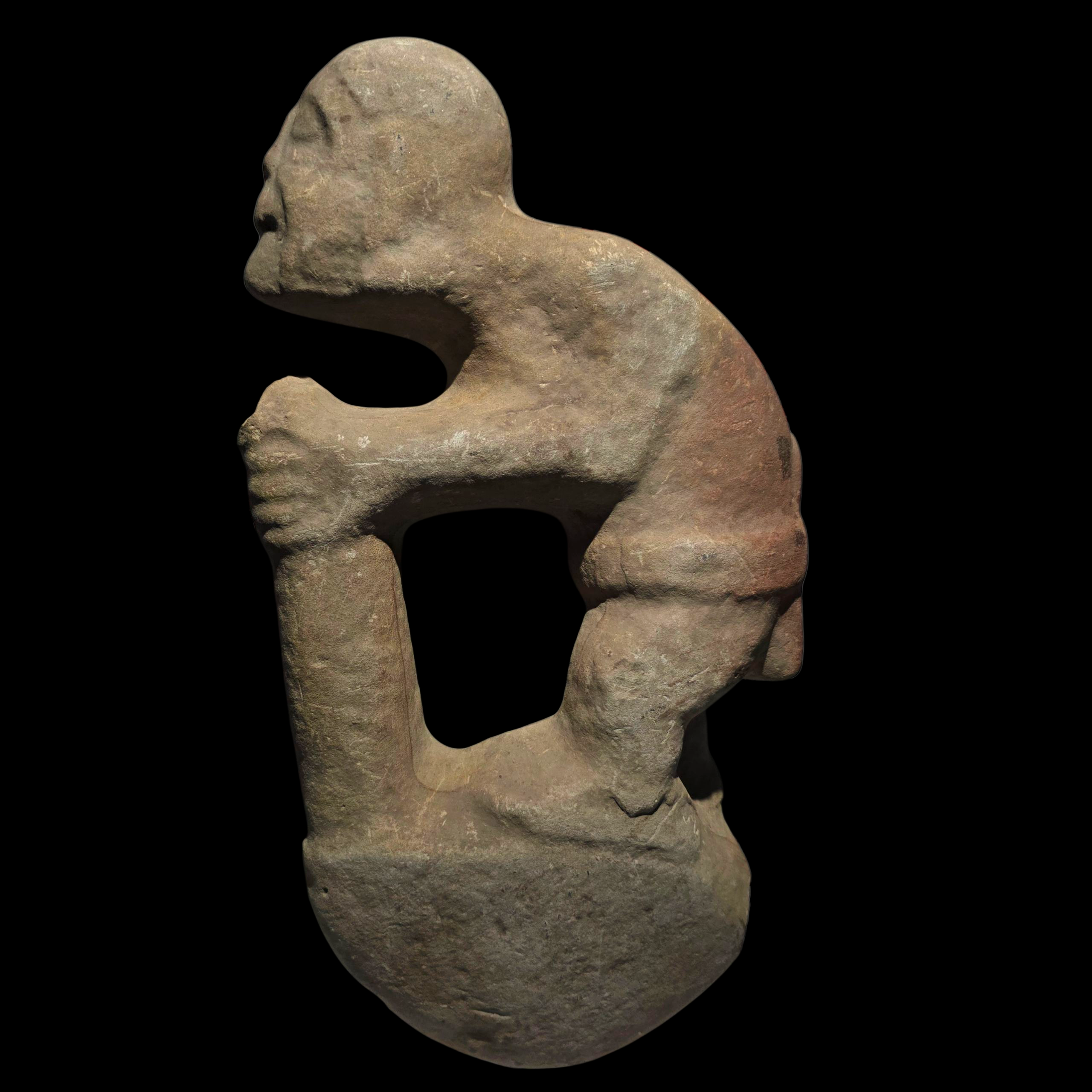
Pre-Columbian Huastec Stone Boundary marker
Description
Huastec Stone Figure of an Agricultural Deity with Digging Stick
Pre-Columbian, Huastec culture, Northern Gulf Coast, Veracruz region, Mexico, Early Postclassic period, ca. A.D. 900–1200
Height: 19 ½ in. (49.5 cm)
An exceptionally rare and monumental stone sculpture depicting an aged, hunch-backed figure reminiscent of the Old Fire God Huehueteotl, here reimagined as an agricultural deity. The figure leans forward with both hands grasping a tall, curving digging stick — the essential tool of maize cultivation and a sacred symbol of fertility, renewal, and humanity’s vital connection to the earth. The head arches upward in an attitude of invocation, the tranquil face defined by furrowed cheeks, a pointed chin, and deeply recessed eyes beneath strongly arched brows. A belt is shown tied with a loop at the back, a wrap-like garment extends below the knees, and the head is covered by a close-fitting cap.
The deeply carved, openwork composition and expressive posture capture the physical and spiritual aspects of agricultural labor, embodying the Huastec conception of sustenance and cyclical renewal. Sculptures of this type were likely placed in shrines, at field boundaries, or within ceremonial landscapes to invoke divine favor for abundant harvests and to sanctify cultivated land.
This impressive example is closely related to the published figure illustrated in the Sotheby’s catalog (Pre-Columbian Art in New York, May 27, 1997, lot no. 137), which was estimated at $15,000 – 25,000 and measures only 12 in. (30.5 cm). By contrast, the present figure stands an imposing 19 ½ in. (49.5 cm) tall, making it not only significantly larger but also among the most monumental examples of its type known.
Provenance: Ex Leonard Auction; deaccessioned from The Lake Forest College Art collection, Illinois, USA.
Comparable: Cf. Von Winning, Pre-Columbian Art in New York, figs. 329, 330, for related figures in the Morton May Collection, St. Louis, and The Metropolitan Museum of Art.

